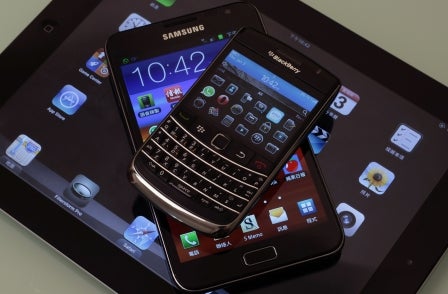
Three speakers from three publishing houses brought day one of the Digital Media Strategies conference to a close on Tuesday and each in turn shed light on the passage from print to digital and from desktop to mobile.
And to demonstrate how the medium alters the offer, Nick Blunden, global digital publisher for The Economist, said his magazine’s radio station now served 1.5 million streams a month while the man from Auto Trader said the “transition from publisher to search [provider]” has made the “transition to mobile relatively easy”.
Nick Gee is that man from Trader Media Group and he revealed that visits from mobile phones now accounted for 33 per cent of online traffic – up from 23 per cent in January 2012 and reflecting the sort of percentages the Wall Street Journal, for one, is seeing.
While Auto Trader’s mobile site had grown to over 3.5 million unique users a month this hadn’t impacted the growth of the website which hosts 10.9 million users across the same time period. “Mobile has been incremental to our business,” Gee said. It had not been “cannibalistic”. (Incidentally, Gee got the biggest laugh of the afternoon when, having lost his thread half way through an anecdote about a Range Rover, he admitted: “I don’t really know my cars that well.”)
Blunden from The Economist echoed Gee’s view that one platform doesn’t necessarily damage another. “Digital is not a zero sum game,” he said citing the fact that 75 per cent of new subscribers in the United States are buying print, either alone or as part of a print-plus-digital deal. The company had recently unbundled its subscriptions packages offering annual print subs at $127, digital only for the same price and print-plus-digital for $160 a year. Fifty per cent of subscribers were prepared, against expectation, to pay for the most expensive of these options; the other two options accounting for 25 per cent each. (Given those numbers, it's also true to say that 75 per cent of new subscribers are buying digital but you get his point.)
On those audio streams, Blunden argued that radio and podcasts allowed The Economist to compete not just for people’s scarce “reading time” but also for their “free time”. He cited a group of subscribers who listen while swimming via waterproofed iPhones – not a core audience, one suspects, but indicative of a trend.
The other voice was Emma Fulton, digital product owner at News International who shared some numbers that surprised and some that didn’t.
Fulton said readers of NI newspapers “over index” (translation: they are more likely to have tablets and smartphone than the UK average). So 84 per cent of digital views to The Times came via a tablet — an indicator too of how users swipe through multiple pages on a tablet rather than being task-oriented on a website. Meanwhile, nearly a quarter of visitors to The Sun, in its online incarnations, came via smartphone. In all 87 per cent of tablet and smartphone traffic to The Times is from Apple IoS-based devices.
Significantly, only 10 per cent of subscribers to The Times’s iPad app purchased it via iTunes and the App Store – the rest were coming direct in one form or another. This is likely to be a result of NI’s aggressive marketing, an expense that means the group avoids handing over 30 per cent of revenues to Apple in most instances. The accountants at News International will know if the marketing is paying for itself.
Equally intriguing is the fact that Android accounts for only 2 per cent views to The Times. For a paper that has been offering Google’s Nexus 7 tablet for £50 as part of its subscription drive, this seems like a disappointingly low number. But perhaps there’s a simple explanation. Answers below, please.
Update: this post has been updated to clarify tablet behaviour on The Times.
Email pged@pressgazette.co.uk to point out mistakes, provide story tips or send in a letter for publication on our "Letters Page" blog
